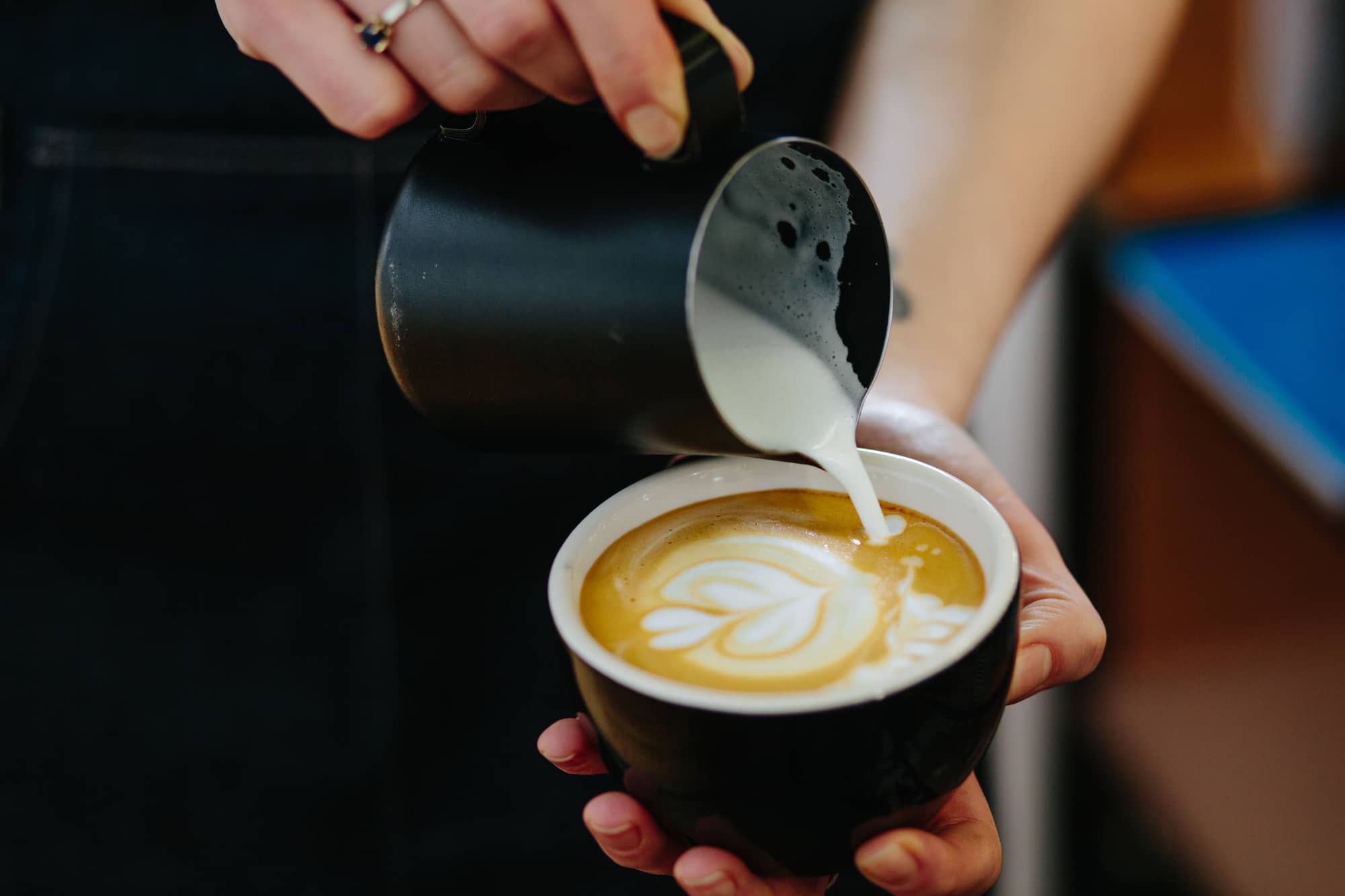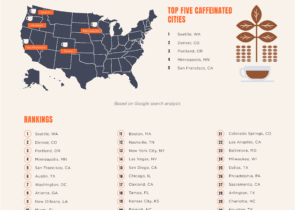Do you love a good latte or cappuccino? If you do, then you know that the key to a great milky coffee is the foam. Frothed milk makes a huge difference in terms of the taste and texture of your drink. And, just like different coffee beans produce different flavors, different kinds of milk work better than others, and there are a few tricks that you need to know to create the perfect rich foam in your coffee cup.
Coffee is a carefully calculated art form, and milk is an integral part of that. To a true coffee lover, getting the milk right is equally as important as nailing the espresso shot. And because of the barista’s talent and the high-quality milk utilized, exquisite latte art and coffee foam are possible on espresso-based milk beverages.
Poor-quality milk will result in flaccid froth and fading foam. However, the correct milk could make the difference between an okay cup of coffee and an unforgettable one. Of course, you could just forget about milk altogether and use coffee creamer, but where’s the fun in that?
So, we’re here to tell you everything you need to know about frothing milk and finding the best fresh milk for the job! Before long, you’ll be able to make cafe-quality drinks right in your own kitchen!

What makes milk go frothy?
So, before we get into the good stuff, you should understand exactly why milk foams up when it is frothed. Milk consists of water, fat, whey protein, and lactose. When milk is heated, the proteins denature (or unwind). This process causes the denatured milk proteins to tangle up with each other and form bonds. These bonds trap the air bubbles and give frothed milk its characteristic foaminess.
So, when combined with the fat and heated, the proteins found in milk form the delicious foamed milk we all know and love on our coffees. In theory, the more protein content there is in the milk, the more stable the foam will be.
However, a certain type of protein called casein can actually make the foam less stable. Plus, the milk foam quality is determined by the quality of the milk.
The quality of a cow’s milk is also determined by the cow’s diet, the type of cow, and how the milk is handled after it’s collected. Store milk in an opaque container to maintain freshness longer.
So, to get the best froth, it’s essential to find fresh, high-quality milk that has plenty of protein, as well as low levels of casein.
What is the best milk for frothing?
The answer to this question depends on what you’re looking for in your foam. For example, if you want a thick and creamy foam, then you’ll want to use milk with more fat. On the other hand, if you’re looking for a lighter foam, then you’ll want to use milk with less fat.
Here are some of the most popular types of milk for frothing:
Whole Milk
Whole milk is a great option for frothing because it has a good balance of proteins and fats. These fats tend to produce a sweeter, distinct flavor. Whole high-protein milk also has a nice creamy texture and produces the thickest foam. You can also get excellent outcomes without using a professional milk frother or steamer wand.
However, because whole milk has the highest fat and protein levels, you need to make sure the milk you’re using is fresh. Even if the milk is only a few days old, it may be tainted with excessive glycerol, making it more difficult to form a stable foam.
Semi-Skimmed Milk
With significantly less fat than whole milk, semi-skimmed milk (also called two percent milk) is a healthier option while maintaining a good balance of proteins. This type of milk also works well when frothed, resulting in a thick foam with fewer bubbles and a less creamy flavor than higher-fat milk. Nonetheless, it’s a good option for those who want to avoid using whole milk but still want a creamy foam.
Oat Milk
Oat milk is a great vegan-friendly dairy alternative with high protein and mineral levels. This popular milk is one of the most popular non-dairy milk alternatives for coffee drinkers, owing to its delicious taste and creaminess that pairs well with a shot of espresso.
This plant-based milk produces a light, creamy foam with a slightly nutty taste when frothed. Thanks to its high protein and fat content, regular oat milk has a very similar silky texture and taste to whole milk foam, making it a good option for froth.
However, the downside of oat milk is that the foam won’t hold its form nearly as long because oat milk has a much higher water content than whole milk.
Skim Milk
With the lowest fat content, skimmed milk might not seem like an obvious choice for creating foamy milk.
Skimmed non-fat milk is the healthiest choice because it contains the least fat. And, since you don’t have to worry about glycerol because the fat has been eliminated from the milk, skim milk is actually pretty good.
Skim milk bubbles are thinner (since there is no fat) and more delicate, but they are simpler to shape than those made with whole milk. Skim milk forms larger bubbles and creates a much more stable foam, which is ideal for practicing latte art.
Almond Milk
Almond milk is another lactose-free alternative to dairy milk with high levels of calcium and vitamin E. When frothed, almond milk creates a light and fluffy foam with a nutty taste.
However, because almond milk doesn’t have nearly as many proteins as animal milk, it’s not the best choice for creating stable foam. The bubbles will be much smaller and thinner. Because it creates long-lasting foam, it’s still a viable alternative option for coffee art.
And with so many almond milk brands on the market, you’re bound to find one that suits you.
Soy Milk
Finally, soy milk is the most high-protein of the dairy-free options on this list and a favorite non-dairy frothing milk in coffee shops – it contains a very similar amount of protein to cow’s milk. As a result, soy milk produces delicate foam with small bubbles when frothed, but the foam is also thick, creamy, and stable. You’ll still have to be concerned about glycerol, but it’s not as much of an issue as it is with whole milk.
What do you need to create the perfect milk foam?
As we’ve mentioned, creating gorgeous milk foam is both an art and a science. You need to make sure you have a few things to achieve the perfect foam.
A milk frother
First, you’ll need a good quality electric milk frother or steamer wand. You can use an automatic machine or invest in a manual steam wand or handheld milk frother, which will give you more control over the steamed milk process.
The perfect temperature
As well as thinking about the type of milk you’re using, it’s also important to get the temperature right. This is actually due to the lactose in the milk. Lactose is the form of carbohydrate present in milk, and this is broken down into lactic acid and glucose, which give the liquid its characteristic milk taste.
However, when milk is steamed at a temperature of 100° C or more, this causes “browning.” Browning is where the lactose and milk proteins start to break down, causing a loss of nutritional value, and the cooked milk takes on a yellowish or brown color.
The optimum temperature for frothing warm milk is 158-176 degrees Fahrenheit (70-80 degrees Celsius). Hot milk will produce unpleasant flavors. Cold milk will prevent the proteins from denaturing and the foam will be less stable.
Of course, different types of milk also require different temperatures. You have to change your approach when frothing plant-based milk. For example, oat milk should be steamed at a lower temperature than almond milk. If you want to create the perfect milk foam, make sure you get the temperature right!
In a nutshell…
Several types of milk froth better than others and can be great for frothing and creating delicious foam. Each type of milk has its own unique set of properties that make it better or worse for frothing. Some milk varieties and alternative milks are ideal for adding flavor to your coffee, whereas others retain their form better for latte art. So, you might even want to experiment until you find the milk that works best for you.
Nonetheless, our favorite options are whole-fat cow milk, oat milk, skim milk, almond milk, and soy milk. The most important thing to remember is to ensure the milk is fresh before frothing. Getting the temperature right is vital, and different types of milk require different temperatures for optimal frothing.
With the right tools and a bit of practice, anyone can create beautiful foam art with ease!
Happy Frothing!







